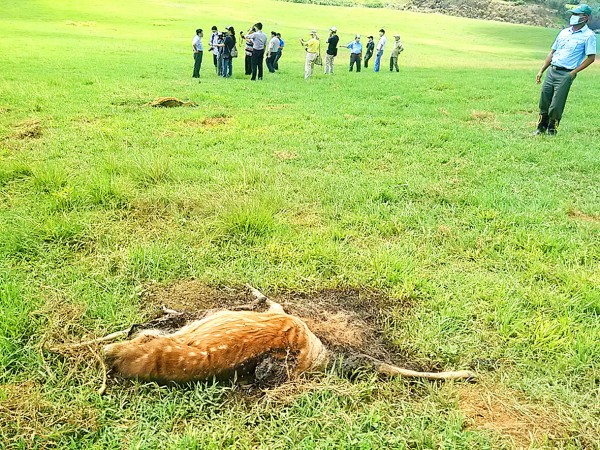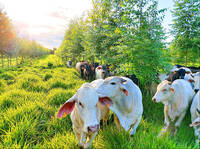《TAIPEI TIMES 焦點》 No deer massacre: Kenting authorities
BLOOD MONEY? Poachers of rare Formosan sika deer in Kenting face a paltry fine of NT$3,000, as stipulated in an outdated law from the 1970s, a park official said
By Sean Lin / Staff reporter
The Kenting National Park Administration yesterday rejected reports that herds of Formosan sika deer had been slaughtered, but added that current laws are insufficient to protect the animals from poaching or mistreatment.
Reports yesterday claimed that more than 300 Formosan sika deer under the care of park administrators had been killed by humans and stray dogs, with their remains scattered across Longzaipu Meadow (籠仔埔) and Banana Bay (香蕉灣) in the park.
Park Deputy Director Lee Teng-chih (李登志) said the agency and local police inspected the sites immediately after hearing the reports, but found just nine dead deer on the meadow, which Lee attributed to an attack by stray dogs.
This is not the first time deer in the park have been attacked by strays, he said.
Referring to what were said to be the bones of deer packed into bags and discarded in the bay, Lee said that preliminary documentation by National Pingtung University of Science and Technology professor Pei Chia-chi (裴家驥) of some skulls found among the remains indicated that the bones belonged to pigs.
He added that pig farmers have disposed of pig bones in the bay for a long time.
Suspected illegal hunters found guilty of poaching in the national park would be fined NT$3,000 under the National Park Act (國家公園法), Lee said, adding that he thinks the fine is “very low.”
Lee said that the law has remained largely the same since it was introduced in the 1970s and that the penalties it stipulates are outdated.
He said that the administration wants to register the deer on the Forestry Bureau’s list of protected wildlife, which would give them better protection under the law, but the animals must pass a Council of Agriculture analysis of their DNA.
The species went extinct in the wild in the 1970s and was restored in about 1984, but some have suspected that the current herds are products of mixed breeding, which has prevented them from being recognized by the council, Lee said.
He added that his agency is gathering information to prove that the deer are pure-blooded.
He said that there are about 2,000 Formosan sika deer on the Hengchun Peninsula (恆春半島) and in the Jioupeng area (九棚) in Pingtung, but most are in captivity in a protected zone managed by the administration.
A prior placement project was unsuccessful, with all 233 deer released into the wild having died, Lee said.
Forestry Bureau Section Chief Kuan Li-hao (管立豪) said the failure of the placement project is the major reason preventing the deer from being recognized.
He said that the deer in the park, restored from Formosan sika deer at zoos, drew suspicion over their origins, with some saying that they could be the offspring of sika deer imported from abroad.
He said that he would love to see the deer put on the list, but urged the administration to cooperate with the bureau in providing a placement project assessment report and DNA documentation.
新聞來源:TAIPEI TIMES





















